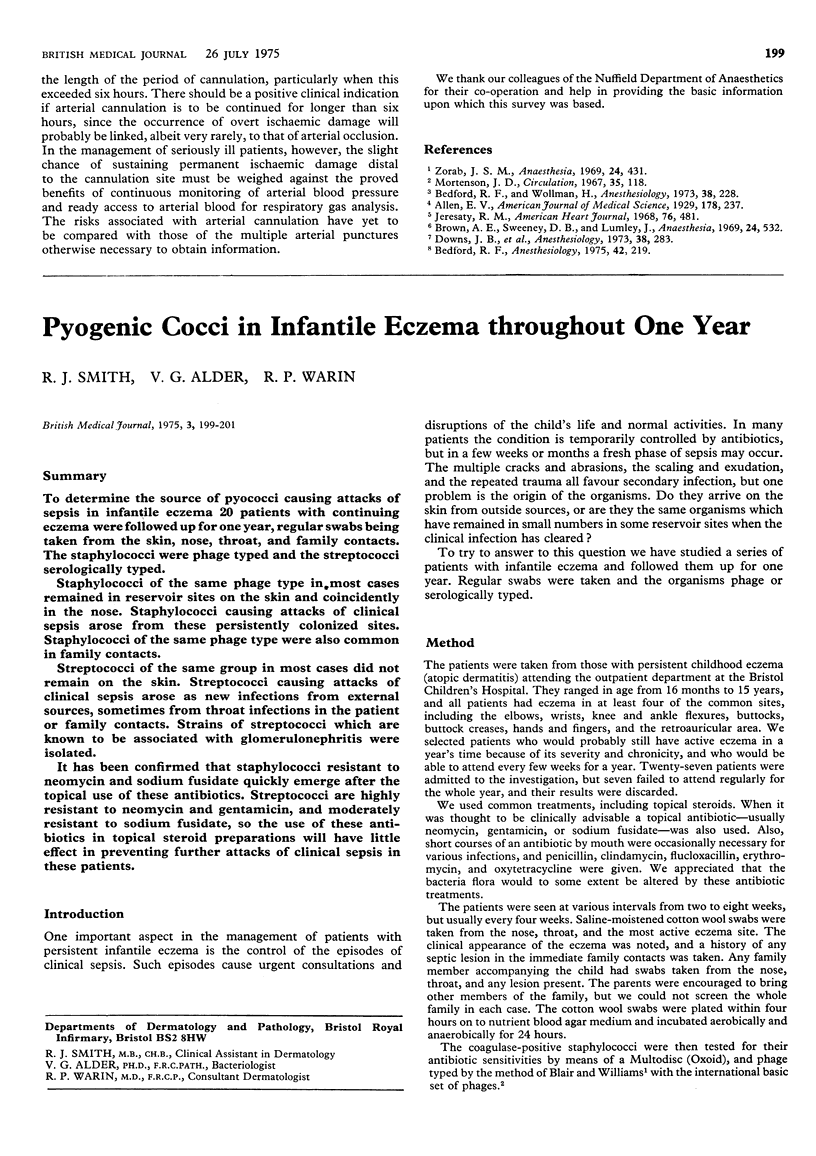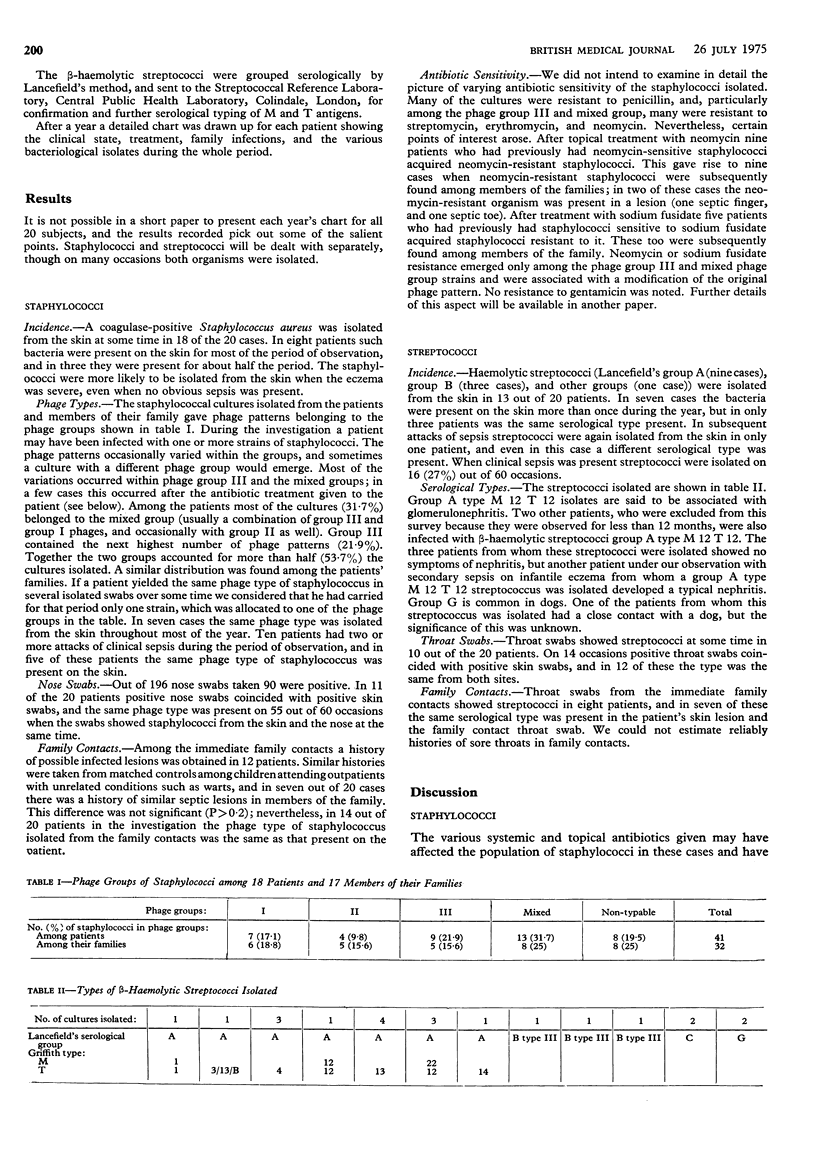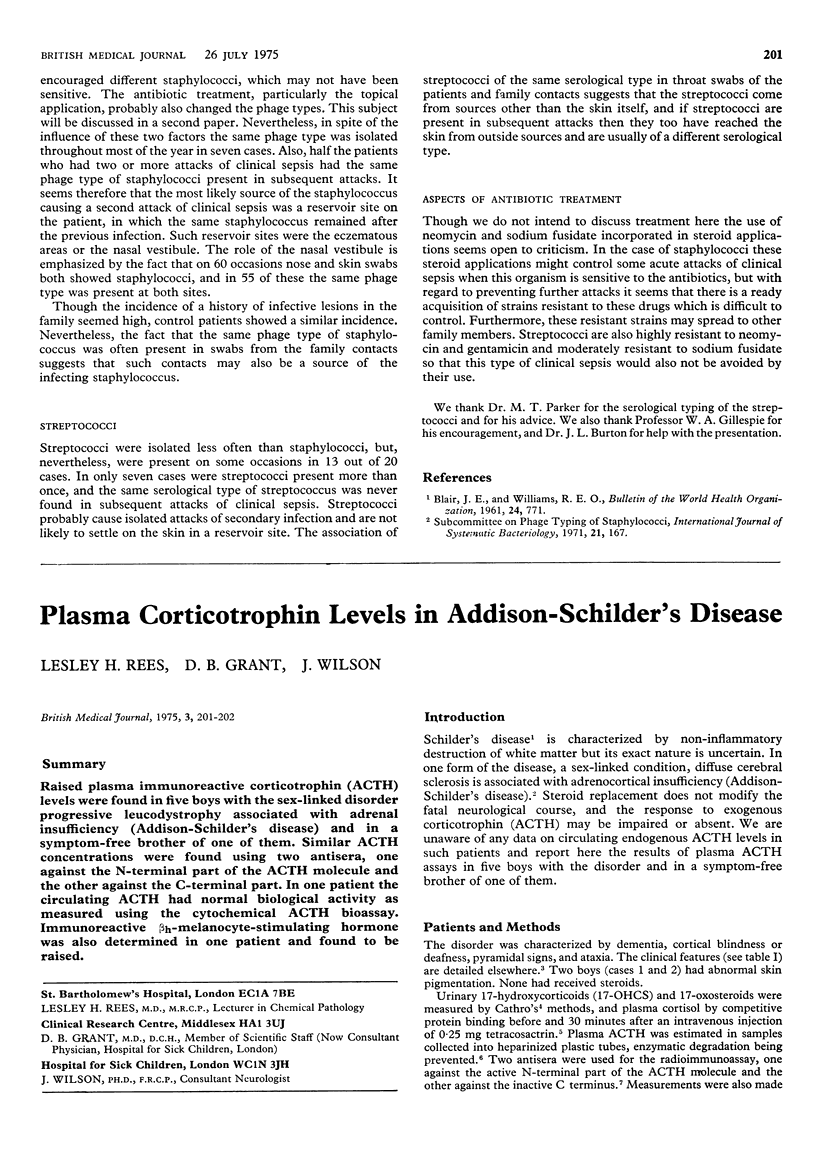Abstract
To determine the source of pyococci causing attacks of sepsis in infantile eczema 20 patients with continuing eczema were followed up for one year, regular swabs being taken from the skin, nose, throat, and family contacts. The staphylococci were phage typed and the streptococci serologically typed. Staphylococci of the same phage type in most cases remained in reservoir sites on the skin and coincidently in the nose. Staphylococci causing attacks of clinical sepsis arose from these persistently colonized sites. Staphylococci of the same phage type were also common in family contacts. Streptococci of the same group in most cases did not remain on the skin. Streptococci causing attacks of clinical sepsis arose as new infections from external sources, sometimes from throat infections in the patient or family contacts. Strains of streptococci which are known to be associated with glomerulonephritis were isolated. It has been confirmed that staphylococci resistant to neomycin and sodium fusidate quickly emerge after the topical use of these antibiotics. Streptococci are highly resistant to neomycin and gentamicin, and moderately resistant to sodium fusidate, so the use of these antibiotics in topical steroid preparations will have little effect in preventing further attacks of clinical sepsis in these patients.
Full text
PDF




